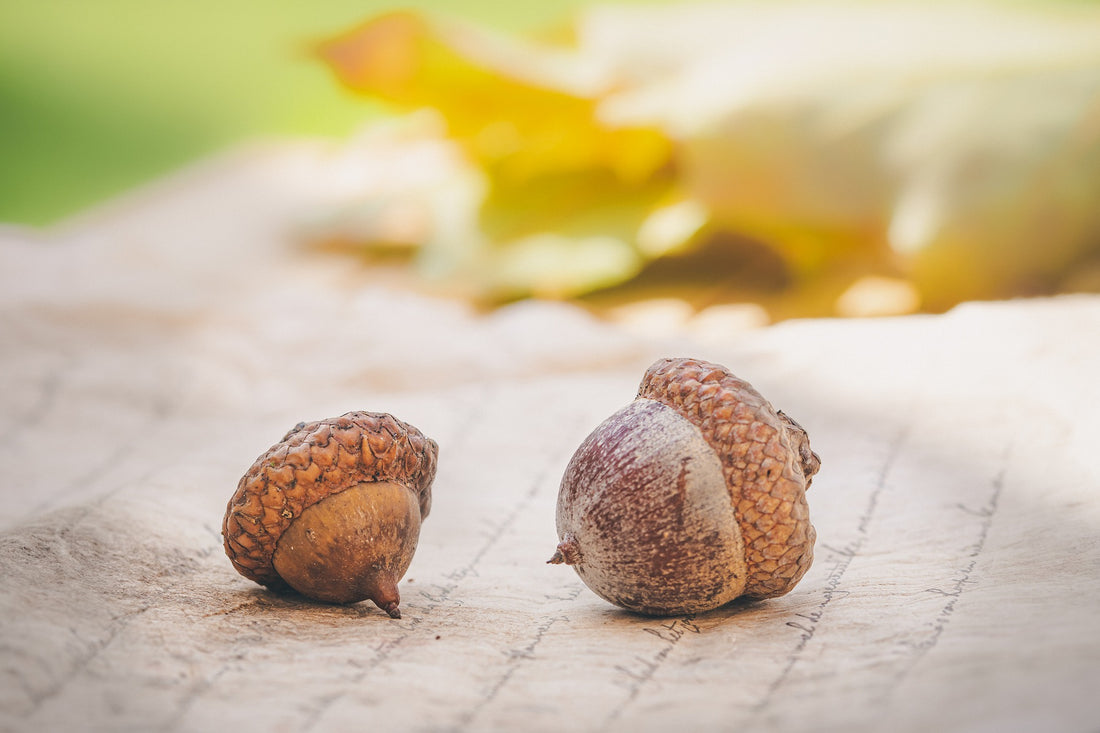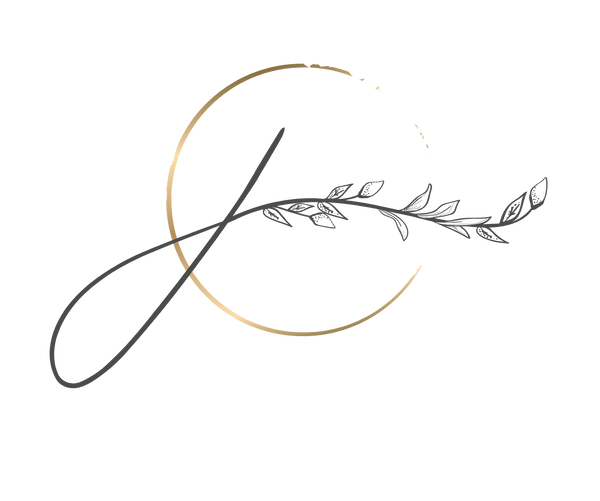
Dyeing with Acorns.

There are more than 500 individual species in the Quercus genus, collectively referred to as oaks. Some of the species native to where I live in Southern Ontario are
- Black Oak (Quercus velutina)
- Bur Oak (Quercus macrocarpa)
- Chinquapin Oak (Quercus muehlenbergii)
- Dwarf Chinquapin Oak (Quercus prinoides)
- Hill’s Oak (Quercus ellipsoidalis)
- Pin Oak (Quercus palustris)
- Red Oak (Quercus rubra)
You can use the acorns from any Oak species. I believe the Oaks in my neighbourhood I gathered from were Red Oak and Black Oak.
All the parts of the acorn can be used for dyeing, the little hats (cup) the shell and the nut.. The critters do a create job at breaking things up, so there is usually a lot of tops & shell pieces to find.
I have a wonderful friend, Lisa, of LJ Aromatherapy, who uses the tops to create aromatherapy diffusers, which she sells as a fundraiser for Woodland Cultural Centre's 'Save the Evidence' campaign. , ( See them here! ) .
While gathering those for her, I keep the broken "hats" and some of the bottoms for myself to play with some dyeing. I tend to not take too many acorns, so there are lots for the squirrels and other critters to have, during the long winters where I live.
Fabric Preparation
This year, I collected about 700 gram of acorns.
For this batch of acorns I used 2 pieces of hemp/organic cotton medium weight muslin. Each weighing 700 grams. Each piece was scoured, and pre- mordanted with alum acetate.
Acorns contain quite a large about of tannin, making it unnecessary to use any other tannins to obtain a strong dye colour.
A good practice, when dyeing with fresh plant material is to start with 100% WOF (weight of fabric) dye material at minimum. You can use more! But I always like to start with 100% and decide if more or less could be used.
Each piece of hemp I had was 700grams. So I figured I would dye one piece at a time. The first being a true show of acorn dye with no modifiers, and the second piece would be a second dip, which I would then post mordant with iron,
MAKING THE DYE
To start, I let the acorns sit in a big pot of water for almost 48 hours. 
Since I dont ever feel like breaking things open, let harder plant materials soaks for longer, helps break them down.
After 48 hours, I brought the pot with the acorn to a boil, and let low simmer for 3 hours.

After sitting for 48 hours
At this point, you can strain out the acorns. I suggest this if you have alot of tiny pieces of acorn bits. Your future self & washing machine will thank you!
I actually left the acorns in the dye pot to boil with the fabric this time, because most of the acorns were quite large.
Fabric time..

Im a fan of tie dye/ shibori. So I tend to always clamp up/ tie up my pieces, to achieve designs in the finished pieces.
I also realize that I never record that process! BUT I WILL! Promise, Ill do a blog about the tying !
Add your fabric and bring the dye pot back up to a simmer.
Simmer 1 to 2 hours. Turn off the heat and leave at least over night. If you have the time and space, more "woody" dyes, tend to give more colour the longer they sit. You could leave your fabric for a few days,
Although I have the space to leave a dye pot in everyone's way, I lacked the patience this time around. So I only let it sit in the pot over night before rinsing.
RINSE...
RESULTS......
SO PRETTY...

acorns on hemp. after washing and drying
Post dye treatment.
Once out of the acorn bath, you have two options.
1. wash and love up the beautiful peachy colour of the acorn dye
OR
2. Make a post mordant iron bath to shift the colour towards grey!
For the post iron bath, I used 2% iron per WOF .
For a 700gram piece of hemp, I used 14grams of Ferrous Sulfate powder.
I mixed the iron in a large pot with enough hot water to be able to submerge the piece of fabric. I added the NON RINSED acorn dyed fabric into the iron bath and brought it up to a simmer, before turning off the heat and letting it sit.

hemp post mordanted with iron.
I left this fabric in the iron bath for 3 hours before rinsing. The time is up to you as you watch the colour darken. Also be aware that iron can degrade finer fabrics, such as wool, silk. Dont leave those fibers in iron for too long!
Results

Top - acorns & Iron, Bottom - Acorns.

pleat fold close up
Next time
After washing everything out and taking in the finished dye colours, some things I will try next year, when working with acorns ...
- More acorns! 150-200% WOF for the hemp. Especially for the pieces I will post mordant with iron. Id like to try to get a darker grey.
- Patience , during the first dye bath, Leaving the fabric in the dye bath for a few days I think it would have made the peach colour a little darker.
All in all, I love the colours from the acorns.
As always, reach out if you're curious, have questions or comments! I love hearing from you! If you know someone who would enjoy this info, please share away!
LOTS OF LOVE from ME to YOU .

3 comments
Its a mast year for my beautiful acorn tree – big old grandfather who guards the entrance to our little sanctuary in the forest. I’ve been excited to try natural dyes for a long time, since my forest and garden are packed with things to play with, but I woke up this morning after the colourful aurora last night with the lively vigour to try and dye something.
Love the respect for acorns and the natural flow in the way you handled the dye process. I didnt want to use mortar or smash up my acorns, and you have given me confidence that I dont need to.
Thank you :)
Acorns are already soaking – Wish me luck!
Thank you!
Just collected a pocket full of acorn caps and googled. You popped up. I’ve used these in the past but like to see what others are doing. Nice website.
@ghansentextiles